Educational and Entertaining Enamel Experiments
April 10th, 2024

Let’s talk about the science of our teeth for a moment. Our enamel has a very high mineral content, making it extremely strong. In fact, enamel just happens to be the hardest substance in our bodies. But, unfortunately, it is not indestructible! Certain foods we eat can actually damage the surface of our teeth. Some simple and entertaining experiments can show children how our teeth can be affected by things we eat and drink, and how we can help protect them.
If you have a science-minded student at home, there are many activities you can do together, using educational websites, common household products and lots and lots of eggs. (Why eggs? Eggshells are a great substitute for teeth in these experiments. Not only are they various shades of white--like our own teeth, they are also calcium-rich—like our own teeth.) You can find any number of experiments using uncooked eggs, hardboiled eggs, whole shells with the contents blown out, or eggshells alone, so you can find just the right activity for whichever egg treatment works best for you.
Examine Enamel Erosion
One of the ways we protect our teeth is with healthy eating. The bacteria in plaque use the sugars and starches in our foods to produce acids. These acids are the substances that break down the minerals in our enamel and leave the enamel weaker. Weaker enamel is more easily attacked by bacteria and acids, which leads to cavities.
With eggs or eggshells and some carefully selected food products, you can see just how acidity affects teeth. Different websites suggest a variety of acidic liquids to dunk your eggs in, such as vinegar, soda, or citrus juices, so it’s easy to find an experiment that works with your pantry. Always use a plain water sample when you submerge eggs or shells to act as a control to measure differences against. How do the egg shells soaked in acidic liquids differ from those in plain water? It’s also fun to add simple sugar water as a test liquid to see what happens. Is it sugar or acid that causes more damage? And why might that be?
The Fluoride Fix
Fluoride is well known as a mineral that protects the structure of our teeth and helps prevent cavities. And there are actually experiments out there to test the protection fluoride provides using your egg stand-ins.
In some experiments, a hardboiled egg is coated with fluoride toothpaste or rinse for a specific amount of time and then dunked into vinegar. An untreated egg also gets a vinegar bath. You are asked to observe what is happening to each egg as it sits in its vinegar bath—are there bubbles on one egg and not the other? What do the bubbles mean? Other experiments require longer exposure to fluoride and then to vinegar—what happens to the shells of the treated and untreated eggs? What could this mean for our teeth?
Staining Studies
Our diet can do more than help create cavities. Enamel is very strong, but it is not stain-proof! Dark colored foods and drinks can make our teeth appear darker or more yellow. (And teeth that have suffered enamel erosion can pick up stains more easily.) How does food affect the brightness of our smiles?
If this question interests you, find experiments that use favorite beverages as a soak for your eggs. Choose liquids with a range of color, such as coffee, soda, and apple juice. Or choose an experiment that uses different varieties of soft drinks. Will foods the same color cause the same amount of discoloration in your egg volunteers? Do you want shorter or longer soaks in each liquid? Do you want to make use of a recycled toothbrush to see if brushing that discolored shell makes a difference? With toothpaste or without?
Even though these activities are designed for older children, they still require adult supervision. You can find detailed instructions for any of these experiments at many science and educational sites online. With some household supplies, plenty of extra cups, and a quantity of eggs, you and your child can demonstrate some of the basic effects our food choices have on the health and appearance of our teeth. It’s a wonderful way to promote healthy eating and brushing habits, scientific curiosity, and shared experiences!
Don’t forget to let Dr. Jared Jacobskind know how your experiments turned out the next time you visit our Windsor, CT office!


















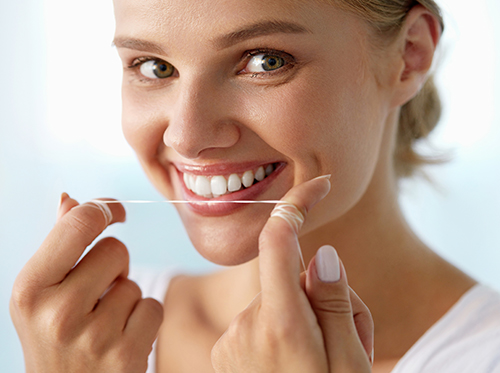









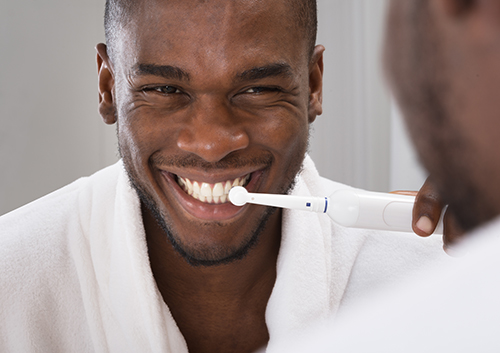



























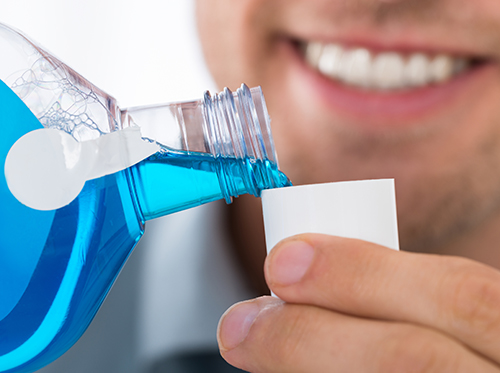














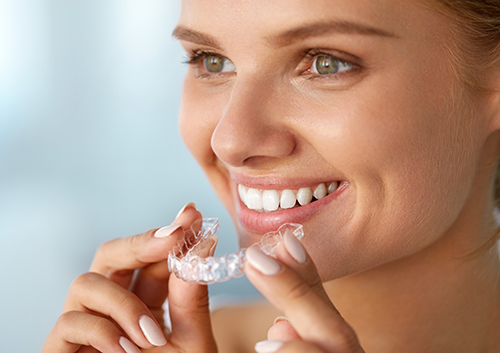










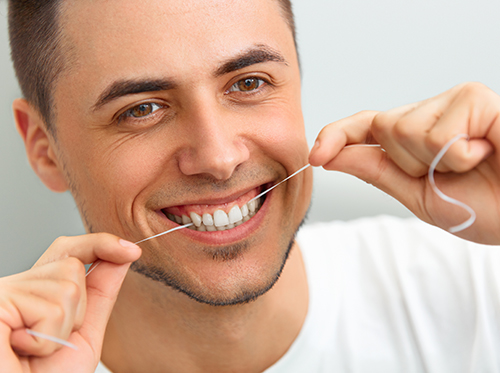














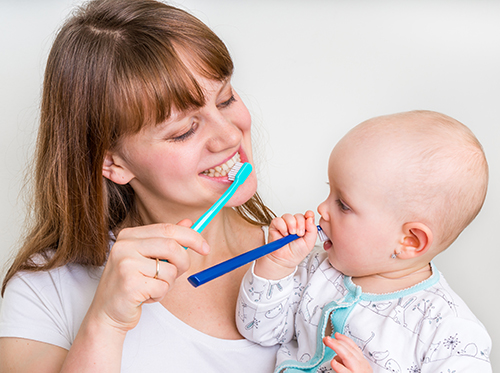






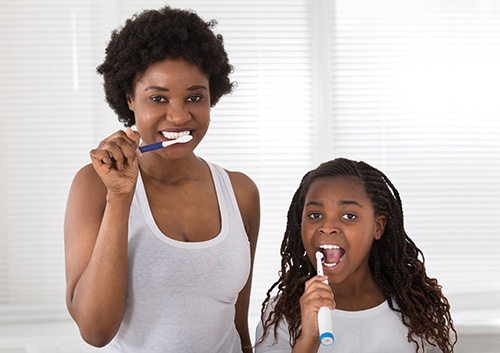
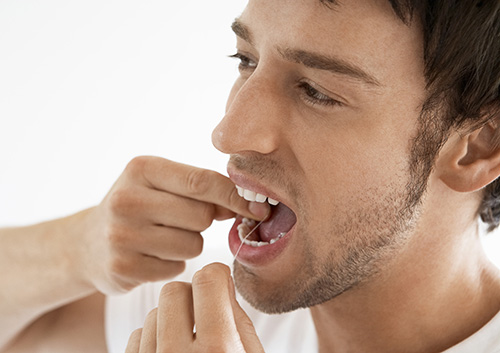



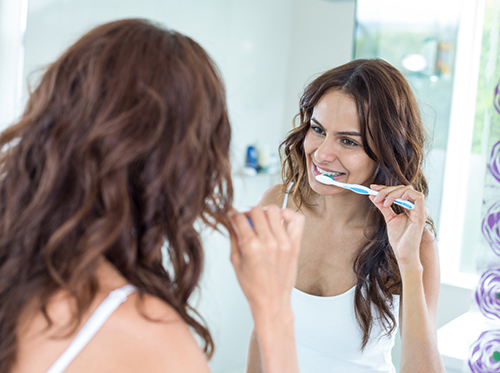






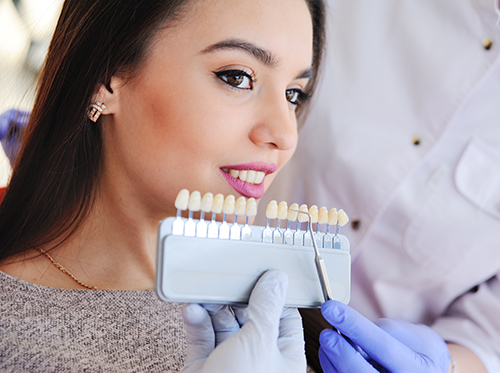





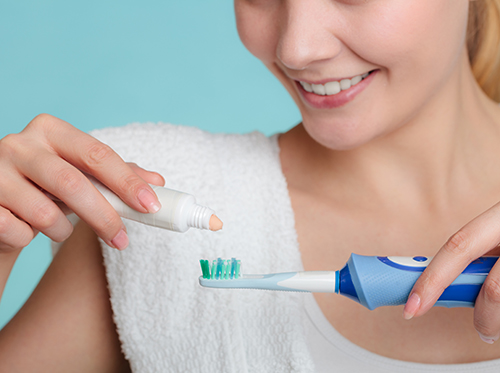




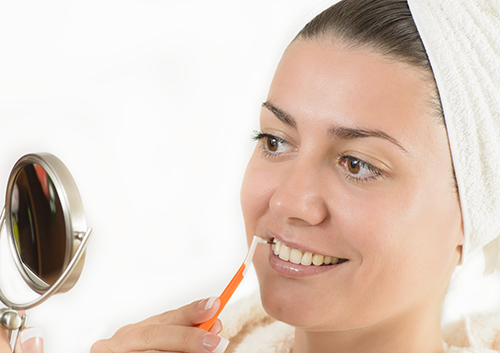












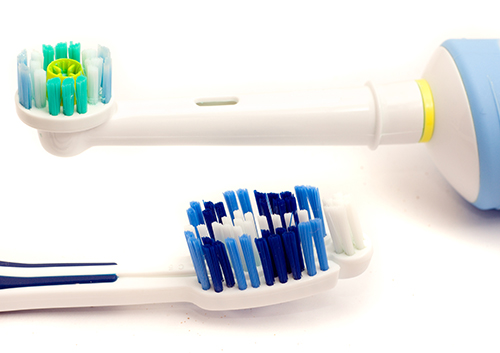
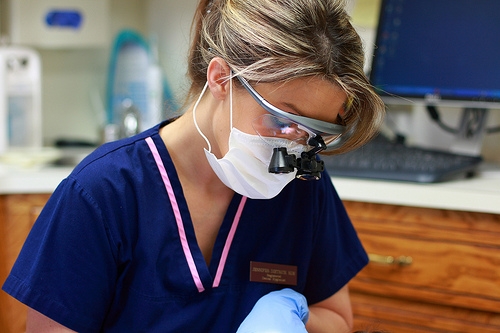






































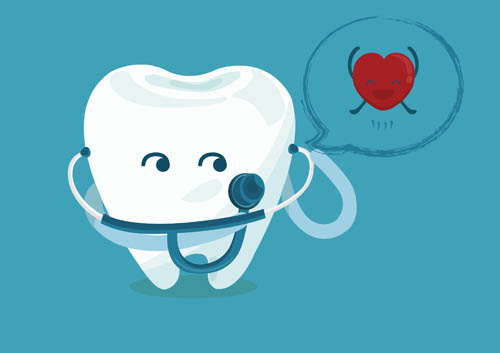























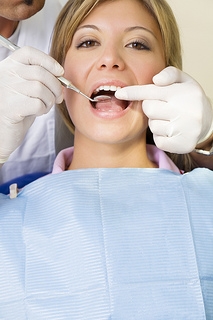

























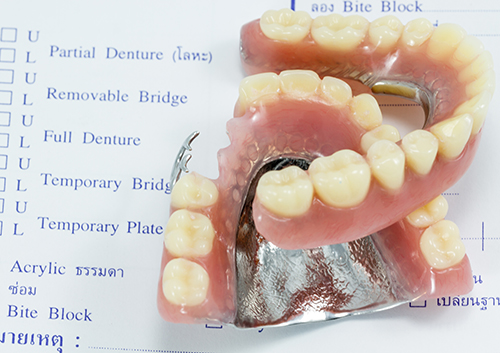






















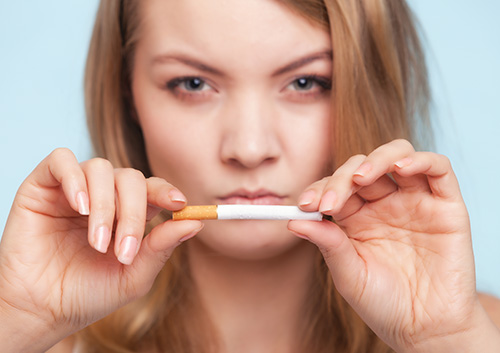












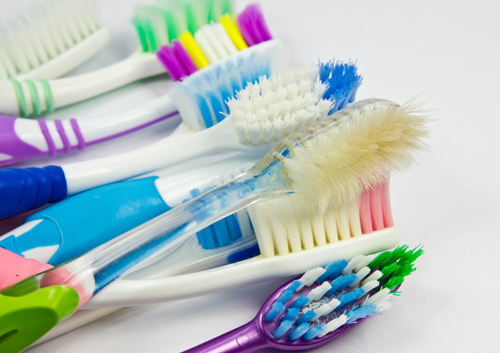
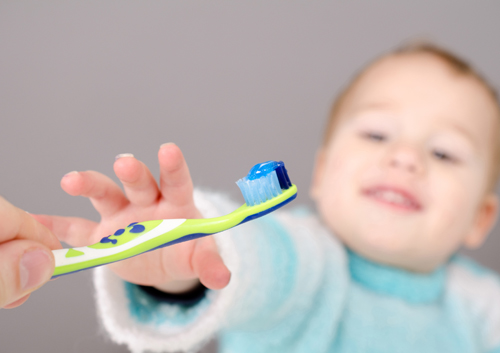





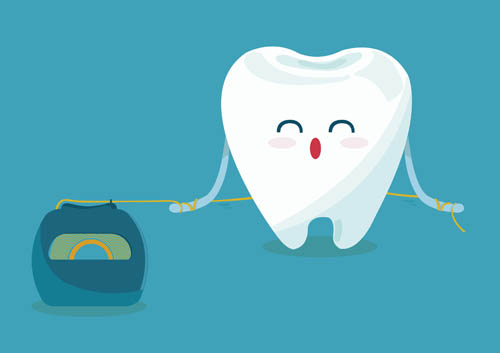




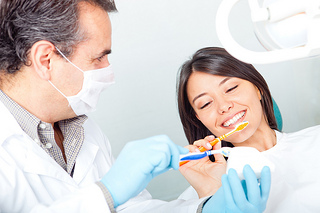











































































































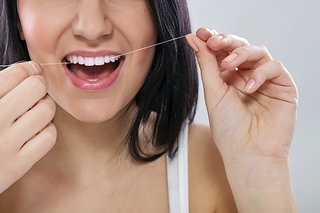

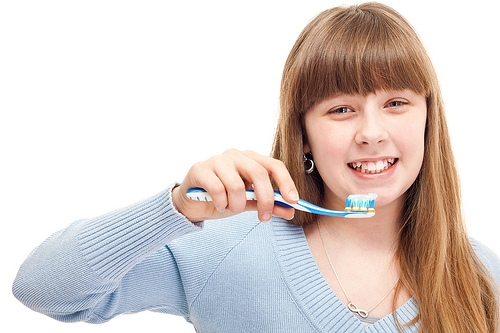

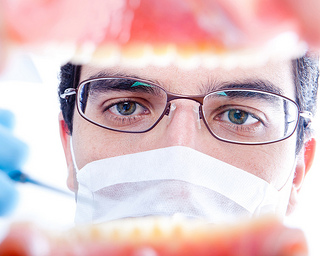
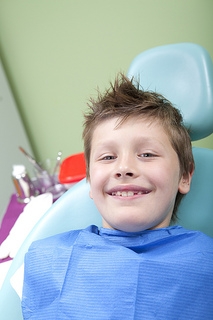






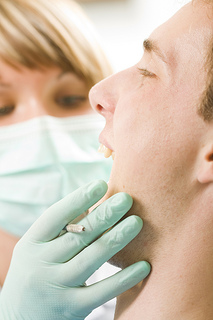




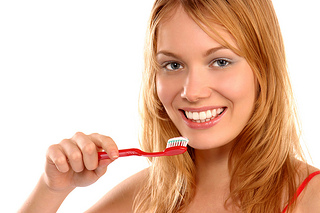













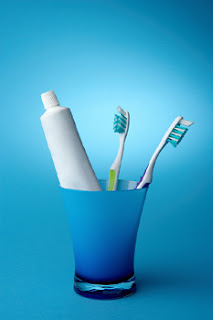






















 Gingivitis is a type of periodontal disease in which only your gums are affected. Gingivitis, according to the American Dental Association (ADA), is a milder and often reversible type of periodontal disease. However, it can lead to periodontitis -- a more destructive and serious disease -- if proper professional treatment and home care aren't put into place. No tissue damage or irreversible bone damage is present in the gingivitis stage of periodontal disease.
Gingivitis is a type of periodontal disease in which only your gums are affected. Gingivitis, according to the American Dental Association (ADA), is a milder and often reversible type of periodontal disease. However, it can lead to periodontitis -- a more destructive and serious disease -- if proper professional treatment and home care aren't put into place. No tissue damage or irreversible bone damage is present in the gingivitis stage of periodontal disease.







 In honor of June Dairy Month, our team would like to thank all of our hard working families in the Dairy Industry. You make us proud!
In honor of June Dairy Month, our team would like to thank all of our hard working families in the Dairy Industry. You make us proud! One word nobody wants to hear when they visit the dentist is Cavity! That’s right, the dreaded cavity; but what exactly is a cavity and how do you get one? A cavity is a hole that develops in a tooth when the tooth begins to decay. It’s important to get a cavity filled as soon as it’s detected so that it does not grow bigger.
One word nobody wants to hear when they visit the dentist is Cavity! That’s right, the dreaded cavity; but what exactly is a cavity and how do you get one? A cavity is a hole that develops in a tooth when the tooth begins to decay. It’s important to get a cavity filled as soon as it’s detected so that it does not grow bigger. Memorial Day weekend, a time to remember and honor the men and women lost while serving for our country. Memorial Day is also the unofficial start of summer, and for many folks getting out of town for three days after being cooped up in the classroom or the office spells sweet, sweet relief.
Memorial Day weekend, a time to remember and honor the men and women lost while serving for our country. Memorial Day is also the unofficial start of summer, and for many folks getting out of town for three days after being cooped up in the classroom or the office spells sweet, sweet relief.
 Great question! When you first come in for your initial consultation, the Doctor will conduct a comprehensive examination to assess your oral health. This will better enable us to determine the best treatment method for you.
Great question! When you first come in for your initial consultation, the Doctor will conduct a comprehensive examination to assess your oral health. This will better enable us to determine the best treatment method for you. Dr. Timothy Foley knows image is everything. May happens to be National Teen Self-Esteem Month, and during this time, parents are encouraged to act as positive role models, help stop negative self-images, and improve confidence and security among teenagers.
Dr. Timothy Foley knows image is everything. May happens to be National Teen Self-Esteem Month, and during this time, parents are encouraged to act as positive role models, help stop negative self-images, and improve confidence and security among teenagers.


 Visiting our office regularly will not only help keep your teeth and mouth healthy, but will also help keep the rest of your body healthy. The fact is, every hour of every day in the U.S., someone dies of oral cancer, which is the sixth-most common diagnosed form of the disease. The five-year survival rate is only 50 percent, and oral cancer is one of the few cancers whose survival rate has not improved. Since April is Oral Cancer Awareness Month, we would like to take this opportunity to remind all of our patients about the importance of maintaining good oral hygiene.
Visiting our office regularly will not only help keep your teeth and mouth healthy, but will also help keep the rest of your body healthy. The fact is, every hour of every day in the U.S., someone dies of oral cancer, which is the sixth-most common diagnosed form of the disease. The five-year survival rate is only 50 percent, and oral cancer is one of the few cancers whose survival rate has not improved. Since April is Oral Cancer Awareness Month, we would like to take this opportunity to remind all of our patients about the importance of maintaining good oral hygiene. Bad breath, also called halitosis, can result from poor dental health habits and may be a sign of other health problems. Bad breath can also be made worse by the types of foods you eat and other unhealthy lifestyle habits. You may not even be aware of your own bad breath, so if you’re concerned you may be suffering from it, talk to our team. We can help identify the cause and, if it’s due to an oral condition, develop a treatment plan to treat it.
Bad breath, also called halitosis, can result from poor dental health habits and may be a sign of other health problems. Bad breath can also be made worse by the types of foods you eat and other unhealthy lifestyle habits. You may not even be aware of your own bad breath, so if you’re concerned you may be suffering from it, talk to our team. We can help identify the cause and, if it’s due to an oral condition, develop a treatment plan to treat it. Dental X-rays are an essential and invaluable tool to help assist us in evaluating your oral health. With X-rays, we can see what’s happening beneath the surface of your teeth and gums and identify oral health issues otherwise hidden during a visual exam, including:
Dental X-rays are an essential and invaluable tool to help assist us in evaluating your oral health. With X-rays, we can see what’s happening beneath the surface of your teeth and gums and identify oral health issues otherwise hidden during a visual exam, including:
 March has arrived, and that can only mean one thing: it’s National Nutrition Month. Every March,
March has arrived, and that can only mean one thing: it’s National Nutrition Month. Every March,
 Everybody knows that smoking causes lung cancer, but did you also know that smokers and tobacco users are susceptible to a variety of oral health problems at a faster rate than non-smokers?
Everybody knows that smoking causes lung cancer, but did you also know that smokers and tobacco users are susceptible to a variety of oral health problems at a faster rate than non-smokers?

 Whether you have a dog, cat, giraffe, or zebra, our team at Dr. Farley’s office want to see the cutest pet photo you have. Submit your cute pet photo in our Facebook contest, have your friends and family vote for your entry, and you’ll have a chance to WIN a Kindle Fire.
Whether you have a dog, cat, giraffe, or zebra, our team at Dr. Farley’s office want to see the cutest pet photo you have. Submit your cute pet photo in our Facebook contest, have your friends and family vote for your entry, and you’ll have a chance to WIN a Kindle Fire.

 Our team at
Our team at  From your very first visit to
From your very first visit to 

 The year is almost over, so we wanted to ask what was memorable about 2011 for you, and what are you looking forward to in 2012? Do you have a new year's resolution, or any exciting plans for the coming year?
The year is almost over, so we wanted to ask what was memorable about 2011 for you, and what are you looking forward to in 2012? Do you have a new year's resolution, or any exciting plans for the coming year? In this season given to tidings of comfort and joy, and as our team at
In this season given to tidings of comfort and joy, and as our team at 
 Everyone knows that smoking causes lung cancer, but did you also know that smokers and tobacco users are susceptible to a variety of oral health problems at a faster rate than non-smokers? Smokeless tobacco use in the United States continues to increase each year, according to the Centers for Disease Control and Prevention. It may be smokeless, but it certainly isn't harmless.
Everyone knows that smoking causes lung cancer, but did you also know that smokers and tobacco users are susceptible to a variety of oral health problems at a faster rate than non-smokers? Smokeless tobacco use in the United States continues to increase each year, according to the Centers for Disease Control and Prevention. It may be smokeless, but it certainly isn't harmless. With the school year close to winding down for a lot of Dr. Steven Farley's patients, we wanted to remind all our patients about the importance of reading. Sure it’s easy to keep putting off reading this time of year, but reading is a vital step in brain development and literacy.
With the school year close to winding down for a lot of Dr. Steven Farley's patients, we wanted to remind all our patients about the importance of reading. Sure it’s easy to keep putting off reading this time of year, but reading is a vital step in brain development and literacy.
 When your child needs urgent dental treatment, Dr. Steven W. Farley and our team stand ready to help. Here are some helpful answers to some recent patient questions.
When your child needs urgent dental treatment, Dr. Steven W. Farley and our team stand ready to help. Here are some helpful answers to some recent patient questions. Happy Veterans’ Day! We would like to take this opportunity to thank all the veterans and those currently on active duty who have put their lives on the line for the freedoms we all enjoy.
Happy Veterans’ Day! We would like to take this opportunity to thank all the veterans and those currently on active duty who have put their lives on the line for the freedoms we all enjoy. Just as there are so many different types of toothbrushes to choose from, each brush also has a different type of bristle! There are generally three different types of bristles; hard, medium, and soft.
Just as there are so many different types of toothbrushes to choose from, each brush also has a different type of bristle! There are generally three different types of bristles; hard, medium, and soft. 


 Did you know that October is
Did you know that October is  Everybody is jumping on the electric toothbrush bandwagon in recent years, with many experts in the dental field claiming electric toothbrushes provide superior dental care. It’s true that electric toothbrushes are recommended for those who can’t do a good job brushing manually or who have arthritis or other conditions. But manual toothbrushes do have some advantages, according to an
Everybody is jumping on the electric toothbrush bandwagon in recent years, with many experts in the dental field claiming electric toothbrushes provide superior dental care. It’s true that electric toothbrushes are recommended for those who can’t do a good job brushing manually or who have arthritis or other conditions. But manual toothbrushes do have some advantages, according to an  At
At  At Steven W. Farley DDS, we know most folks enjoy a hot-brewed coffee or tea in the morning, followed by a cola (or more coffee) in the afternoon. But what many don’t know is that both coffee and tea are especially tough on your teeth, because tannic acid (the substance that makes the dark color) etches into the pits and grooves of tooth enamel, and can stain your pearly whites brown.
At Steven W. Farley DDS, we know most folks enjoy a hot-brewed coffee or tea in the morning, followed by a cola (or more coffee) in the afternoon. But what many don’t know is that both coffee and tea are especially tough on your teeth, because tannic acid (the substance that makes the dark color) etches into the pits and grooves of tooth enamel, and can stain your pearly whites brown. Everyone loves fun facts and dental tips. Fun, fun, fun!
Everyone loves fun facts and dental tips. Fun, fun, fun!  With summer in full swing, some of us at
With summer in full swing, some of us at  Hey parents! Focusing on your kids' teeth and oral health so much that you're neglecting your own? If you've been thinking wistfully about having your own set of perfect teeth, our staff at
Hey parents! Focusing on your kids' teeth and oral health so much that you're neglecting your own? If you've been thinking wistfully about having your own set of perfect teeth, our staff at  We’ve all heard that biting your nails is an awful habit, but you many wonder- really- what’s so bad about it? Recently, our team at
We’ve all heard that biting your nails is an awful habit, but you many wonder- really- what’s so bad about it? Recently, our team at 
 Vending machines are a quick way to satisfy hunger. You put in $1.50 and you get back a candy bar, bag of chips or even a soda…but that’s not all!
Vending machines are a quick way to satisfy hunger. You put in $1.50 and you get back a candy bar, bag of chips or even a soda…but that’s not all!  Wisdom teeth are a type of molar that is found in the very back of your mouth and are the last molars to develop. There are four wisdom teeth: upper left, upper right, lower left, and lower right. These teeth usually appear in late teens or early twenties but may become impacted (fail to erupt) due to lack of room in the jaw or angle of entry. The removal of wisdom teeth has become so commonplace that it is almost a rite of passage for young adults.
Wisdom teeth are a type of molar that is found in the very back of your mouth and are the last molars to develop. There are four wisdom teeth: upper left, upper right, lower left, and lower right. These teeth usually appear in late teens or early twenties but may become impacted (fail to erupt) due to lack of room in the jaw or angle of entry. The removal of wisdom teeth has become so commonplace that it is almost a rite of passage for young adults. Dr. Farley knows image is everything. At an age when image is so important, the thought of having metal brackets and wires constantly attached to teeth may intensify the already-delicate confidence of today's teens. But... not to worry! There is a clear alternative to traditional braces! The team at
Dr. Farley knows image is everything. At an age when image is so important, the thought of having metal brackets and wires constantly attached to teeth may intensify the already-delicate confidence of today's teens. But... not to worry! There is a clear alternative to traditional braces! The team at  According to the American Dental Association, a person's smile outranked eyes, hair and body as the most important physical feature, which is why it's important for our team and Dr. Farley to support National Smile Month this June.
According to the American Dental Association, a person's smile outranked eyes, hair and body as the most important physical feature, which is why it's important for our team and Dr. Farley to support National Smile Month this June. Many people know that Invisalign is a great solution to braces if you don't want to experience the look and feel of traditional metal braces. What few people know, though, is that just like traditional braces, Invisalign requires proper care to work effectively. Good oral hygiene is highly important, even when you are wearing something in your mouth that you can take out to eat with. It's still likely that your aligners can build up plaque if not treated properly. When wearing your Invisalign aligners, Dr. Farley wants you to ask yourself the following questions:
Many people know that Invisalign is a great solution to braces if you don't want to experience the look and feel of traditional metal braces. What few people know, though, is that just like traditional braces, Invisalign requires proper care to work effectively. Good oral hygiene is highly important, even when you are wearing something in your mouth that you can take out to eat with. It's still likely that your aligners can build up plaque if not treated properly. When wearing your Invisalign aligners, Dr. Farley wants you to ask yourself the following questions: Memorial Day weekend, a time to remember and honor the men and women lost while serving for our country. Memorial Day is also the unofficial start of summer, and for many folks in the Windsor area, getting out of town for three days after being cooped up in the classroom or the office spells sweet, sweet relief.
Memorial Day weekend, a time to remember and honor the men and women lost while serving for our country. Memorial Day is also the unofficial start of summer, and for many folks in the Windsor area, getting out of town for three days after being cooped up in the classroom or the office spells sweet, sweet relief. We hope you are not a part of the 51 percent of Americans who don’t floss every day. And we definitely hope you're not part of the 10 percent who never floss at all. Your
We hope you are not a part of the 51 percent of Americans who don’t floss every day. And we definitely hope you're not part of the 10 percent who never floss at all. Your  A whiter smile is one just one dentist visit away! Our professional teeth whitening services can help whiten your teeth faster and easier than ever before. We offer a variety of treatment types, including in-office whitening and take home trays. While in-office treatment can produce drastic results in just one visit, using the take home systems will allow you to maintain your desired level of whitening over several months.
A whiter smile is one just one dentist visit away! Our professional teeth whitening services can help whiten your teeth faster and easier than ever before. We offer a variety of treatment types, including in-office whitening and take home trays. While in-office treatment can produce drastic results in just one visit, using the take home systems will allow you to maintain your desired level of whitening over several months. Whether lending your helping hand to plant trees or grasses or getting out volunteering in various projects in the Windsor area, today is our opportunity to get involved in making our year-round impact in the community. Our
Whether lending your helping hand to plant trees or grasses or getting out volunteering in various projects in the Windsor area, today is our opportunity to get involved in making our year-round impact in the community. Our  Dr. Farley wants to know: Is dairy a major part of your diet? If not, it should be! A
Dr. Farley wants to know: Is dairy a major part of your diet? If not, it should be! A 
 Welcome Spring with a brighter smile!
Welcome Spring with a brighter smile! March has arrived, and that can only mean one thing: it’s National Nutrition Month. Every March, our team and thousands of dentists and hygienists around the country celebrate this occasion, and this year is no different. This March, Dr. Farley and our team want you to think diabetes, obesity and periodontal disease, and how healthful eating and physical activity may improve periodontal health.
March has arrived, and that can only mean one thing: it’s National Nutrition Month. Every March, our team and thousands of dentists and hygienists around the country celebrate this occasion, and this year is no different. This March, Dr. Farley and our team want you to think diabetes, obesity and periodontal disease, and how healthful eating and physical activity may improve periodontal health. We know that there is always a lot of debate in the health community about the health effects of artificial sweeteners, and aspartame is most surely one of the most controversial food additives to ever be approved by the FDA. Here at Dr. Farley's office, we try to provide you with the most up to date information on topics relating to the health of our patients and their loved ones. That is why we want to share with you a few facts that we recently learned in a
We know that there is always a lot of debate in the health community about the health effects of artificial sweeteners, and aspartame is most surely one of the most controversial food additives to ever be approved by the FDA. Here at Dr. Farley's office, we try to provide you with the most up to date information on topics relating to the health of our patients and their loved ones. That is why we want to share with you a few facts that we recently learned in a  Isn’t social media great? Dr. Farley and team love connecting with our patients online, whether it’s by sharing news on our blog or communicating ideas on our interactive Facebook fan page. For social media to work, conversation is vital, and that’s why we invite you to join in and tell us what’s on your mind. Although social media is hugely popular these days, we know it is unpredictable and ever-changing.
Isn’t social media great? Dr. Farley and team love connecting with our patients online, whether it’s by sharing news on our blog or communicating ideas on our interactive Facebook fan page. For social media to work, conversation is vital, and that’s why we invite you to join in and tell us what’s on your mind. Although social media is hugely popular these days, we know it is unpredictable and ever-changing. Did you know February is American Heart Month? It’s a great time to take notice of the health of your heart. Cardiovascular disease remains American's number one killer, according to the American Heart Association. Studies have shown a correlation between gum disease and heart disease, underscoring the importance of good oral health care.
Did you know February is American Heart Month? It’s a great time to take notice of the health of your heart. Cardiovascular disease remains American's number one killer, according to the American Heart Association. Studies have shown a correlation between gum disease and heart disease, underscoring the importance of good oral health care. For the past 61 Februaries, the American Dental Association, or ADA, has sponsored National Children's Dental Health Month to raise awareness about the importance of oral health. National Children's Dental Health Month began as a one-day event in 1941 in a Cleveland clinic. In 1981, however, the program was extended to a month-long celebration known today as National Children’s Dental Health Month.
For the past 61 Februaries, the American Dental Association, or ADA, has sponsored National Children's Dental Health Month to raise awareness about the importance of oral health. National Children's Dental Health Month began as a one-day event in 1941 in a Cleveland clinic. In 1981, however, the program was extended to a month-long celebration known today as National Children’s Dental Health Month. If you’re brushing and flossing on a regular basis, we think that’s fantastic! But, don’t forget that it’s also important to visit Dr. Farley & team every six months, in addition to brushing your teeth a couple times a day. Because your dental health is important to us, we'd like to remind you that it's time for your examination.
If you’re brushing and flossing on a regular basis, we think that’s fantastic! But, don’t forget that it’s also important to visit Dr. Farley & team every six months, in addition to brushing your teeth a couple times a day. Because your dental health is important to us, we'd like to remind you that it's time for your examination. Access to your account, 24/7. Sounds simple and convenient, doesn’t it?
Access to your account, 24/7. Sounds simple and convenient, doesn’t it? Yes, it is, and that’s part of what makes it work. To find out if you are the right candidate for Invisalign treatment, the first thing we do is to take an impression of your teeth as they are now and digitize it. Using special software, we look at the current positioning of your teeth and compare it to the way your teeth should look.
Yes, it is, and that’s part of what makes it work. To find out if you are the right candidate for Invisalign treatment, the first thing we do is to take an impression of your teeth as they are now and digitize it. Using special software, we look at the current positioning of your teeth and compare it to the way your teeth should look. At our
At our  The 2010 holiday season is upon us, and our team at Dr. Farley's office would like to wish all our patients and their families the merriest of holidays and best wishes for the New Year.
The 2010 holiday season is upon us, and our team at Dr. Farley's office would like to wish all our patients and their families the merriest of holidays and best wishes for the New Year. Dr. Farley and team would like to give those patients with flex spend, health savings, or insurance benefits a friendly end of the year reminder that it's high time to schedule your dental visits so you optimize your benefit. Call us to get in for your cleaning and dental care before the end of the year!
Dr. Farley and team would like to give those patients with flex spend, health savings, or insurance benefits a friendly end of the year reminder that it's high time to schedule your dental visits so you optimize your benefit. Call us to get in for your cleaning and dental care before the end of the year! Dr. Farley and team would like to wish you a safe and happy Thanksgiving. Enjoy a day filled of friends, family, and great thanksgiving food! What are you most thankful for this year? Leave us a comment, or if you have any stories or pictures to share with us, we encourage you to share them on our Facebook page!
Dr. Farley and team would like to wish you a safe and happy Thanksgiving. Enjoy a day filled of friends, family, and great thanksgiving food! What are you most thankful for this year? Leave us a comment, or if you have any stories or pictures to share with us, we encourage you to share them on our Facebook page! It’s fall, a time when all across the country, the leaves begin to change colors, the air becomes crisp, and families begin to make plans for Thanksgiving.
It’s fall, a time when all across the country, the leaves begin to change colors, the air becomes crisp, and families begin to make plans for Thanksgiving.
 Folks with big smiles may actually live longer than those who don’t, according to a March 2010 study at Michigan’s Wayne State University. We have known for quite some time that positive emotion has been linked to both physical and mental health, but researchers at the university did something quite interesting: they looked at photos of 230 ball-players who began their careers in baseball prior to 1950 and studied their smile intensity (ranging from big smile, no smile or partial smile). The players' smile ratings were compared with data from deaths that occurred from 2006 through 2009. The researchers then took into account other factors that impact life longevity, including body mass index, career length and even college attendance.
Folks with big smiles may actually live longer than those who don’t, according to a March 2010 study at Michigan’s Wayne State University. We have known for quite some time that positive emotion has been linked to both physical and mental health, but researchers at the university did something quite interesting: they looked at photos of 230 ball-players who began their careers in baseball prior to 1950 and studied their smile intensity (ranging from big smile, no smile or partial smile). The players' smile ratings were compared with data from deaths that occurred from 2006 through 2009. The researchers then took into account other factors that impact life longevity, including body mass index, career length and even college attendance. For moms and dads worried about kids going overboard on candies, sugar and other sweets, Halloween is a dreaded annual event.
For moms and dads worried about kids going overboard on candies, sugar and other sweets, Halloween is a dreaded annual event. Would you believe it's already October? For our staff, October means one thing:
Would you believe it's already October? For our staff, October means one thing:  Dr. Farley and Team will be providing FREE consultations to answer your questions about Invisalign treatment, the clear way to straighten teeth. If you have wondered if Invisalign is right for you, make an appointment for this special event. Email Gail at
Dr. Farley and Team will be providing FREE consultations to answer your questions about Invisalign treatment, the clear way to straighten teeth. If you have wondered if Invisalign is right for you, make an appointment for this special event. Email Gail at  One word nobody wants to hear when they visit the dentist is Cavity! That’s right, the dreaded cavity; but what exactly is a cavity and how do you get one? A cavity is a hole that develops in a tooth when the tooth begins to decay. It’s important to get a cavity filled as soon as it’s detected so that it does not grow bigger.
One word nobody wants to hear when they visit the dentist is Cavity! That’s right, the dreaded cavity; but what exactly is a cavity and how do you get one? A cavity is a hole that develops in a tooth when the tooth begins to decay. It’s important to get a cavity filled as soon as it’s detected so that it does not grow bigger.














 My goal is to add value to my patients' lives and increase their self-esteem by the creation of beautiful, predictable, long lasting restorations. I always take into consideration my patient's needs and opinions. My practice philosophy can be summed up in one word- excellence.
My goal is to add value to my patients' lives and increase their self-esteem by the creation of beautiful, predictable, long lasting restorations. I always take into consideration my patient's needs and opinions. My practice philosophy can be summed up in one word- excellence.